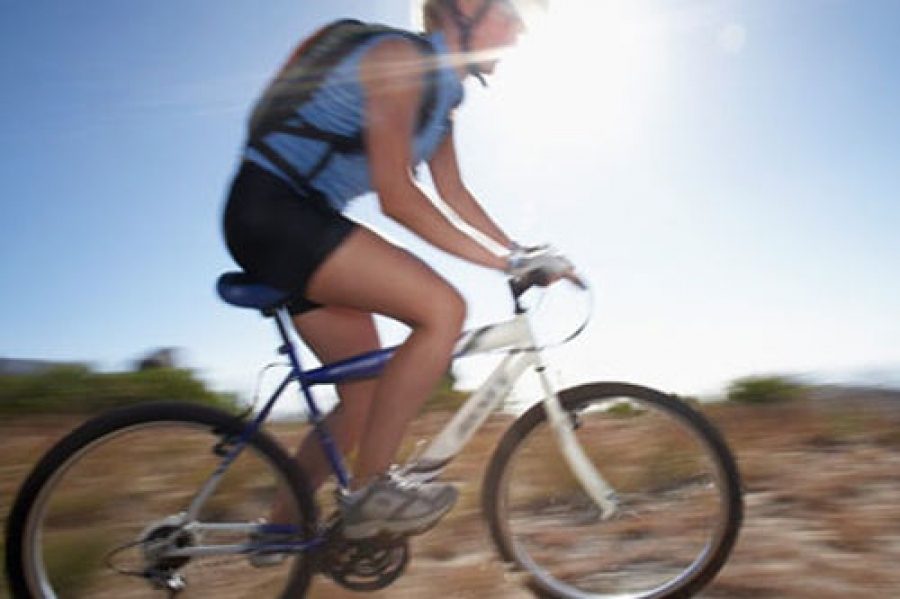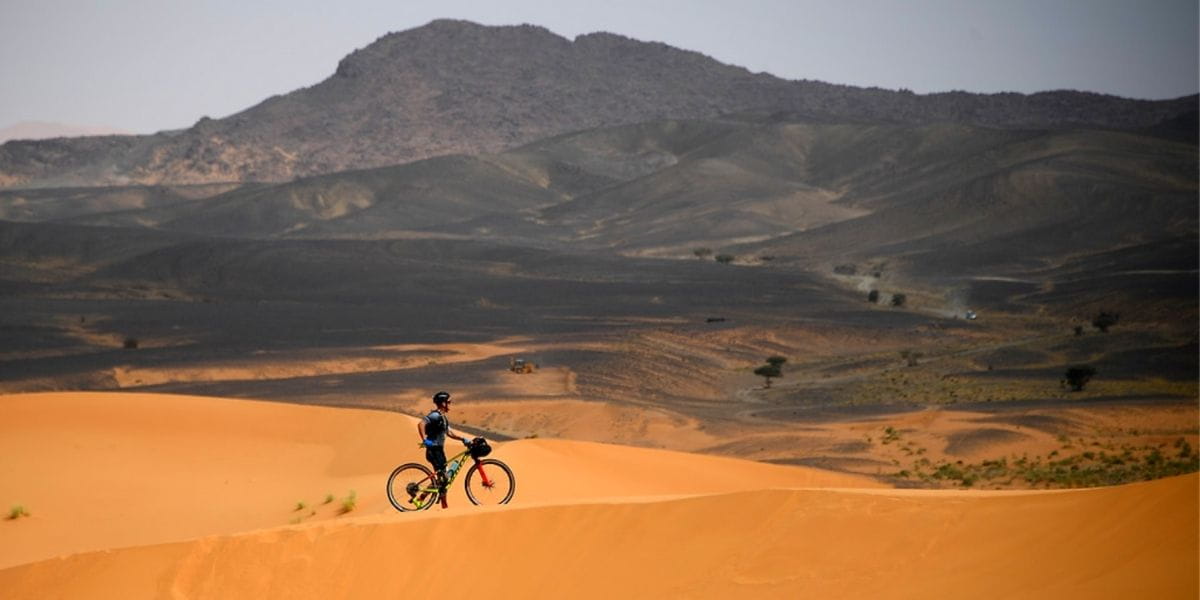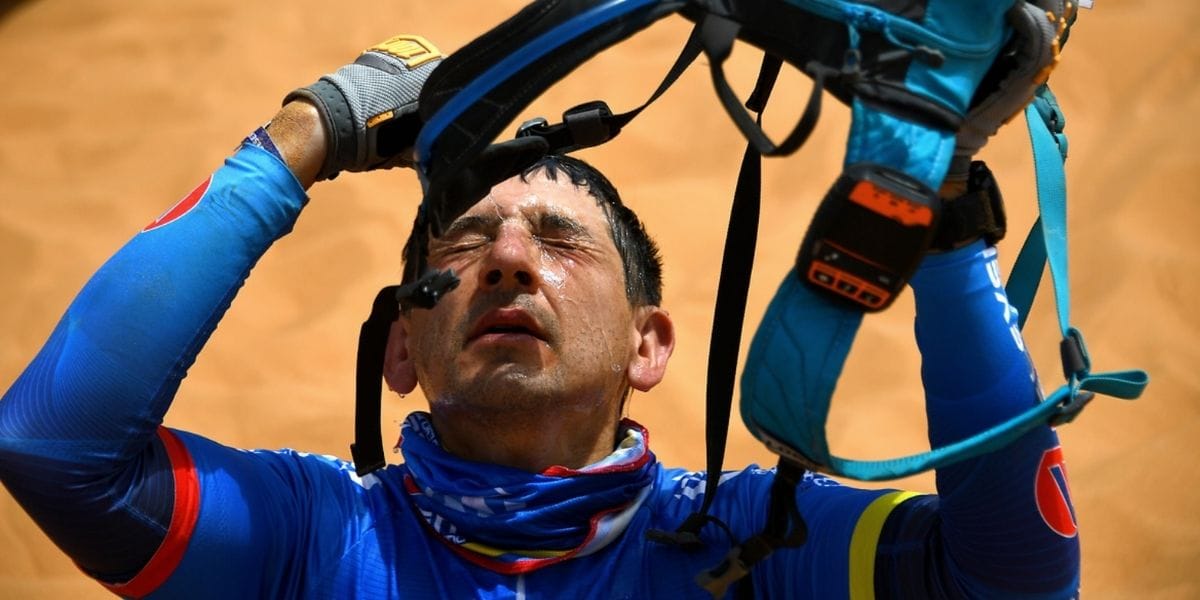
5 essential tips for mountain biking in hot weather
Content
In global warming conditions, it is not uncommon to take a sports vacation when it is very hot (above 30 ° C) and want to go mountain biking in good weather 🌞.
Riding in extreme heat has its advantages and disadvantages. Your body will adapt after a few walks in the hot sun and will improve its cooling and VO2max.
However, be careful, without supervision, your body will be at a higher risk of "heatstroke" or malignant hyperthermia.
We will give you some tips for mountain biking in very hot weather.
Physiological Benefits
When you drive in extremely hot weather, your body will develop heat-fighting mechanisms.
Improved thermoregulation
The human body is a wonderful machine, it reacts and adapts to environmental changes, whether it be temperature (hot, cold), pressure (height, depth) or humidity (dry, wet). In a very hot environment, your body will sweat. In particular, during physical exercise such as cycling, more than 80% of the heat generated is converted into sweat and dissipated through evaporation ♨️. In addition, moving forward creates a relative wind that optimizes body cooling.
Increased blood volume

The more the body is exposed to high temperatures, the more thermoregulation comes into play in order to maintain vital functions in a situation of optimal functioning. The body must maintain the ability to supply the organs with energy and water.
Therefore, for this, the volume of liquid is increased in order to compensate for the effect of evaporation.
If we combine these two effects, it is very easy to understand that in hot weather, the first tip to follow is constant hydration 💧.
Improved VO2max
Maximum oxygen uptake or VO2max is the maximum amount of oxygen that a person can consume per unit of time during maximal aerobic dynamic exercise. It depends on the weight of each person, and the higher the number, the better their cardiovascular health.
But why would a hot environment improve VO2max?
The increase in plasma (blood) volume reduces the competition that can take place between the skin (where heat is exchanged to lower body temperature) and muscles for the distribution of nutrients. On the one hand, acclimation to a warm environment improves the process of maintaining body heat, that is, with the same effort, less energy is required to reduce body heat (the body reacts by synthesizing more mitochondria, factories that convert nutrients into energy in the body). Heat also stimulates the regulation of heat shock proteins, or HSPs, which improve heat tolerance. This allows you to train longer in hot weather. On the other hand, the body creates new blood vessels (angiogenesis) to improve the distribution of blood to muscles and skin. There is an improvement in the blood supply to the muscles used during exercise.
Heatstroke

Hyperthermia while riding an ATV is extremely dangerous, and dealing with heatstroke, which is already present, is much more difficult than a few simple preventative measures that are applied.
⚠️ Always be on the alert, symptoms appear very quickly:
- Increased heart rate
- Thirst
- Dizziness
- colic
- Be very very hot
It is important to consider these symptoms because it is your body that indicates that it can no longer function normally. Indeed, neuromuscular deficits or cerebral hypoglycemia are the next stage and are conditions requiring medical treatment. When the internal temperature reaches 41 ° C, it can be fatal.
Advice to follow
1. Get ready for acclimatization.
This is especially true if you are traveling to a destination that is noticeably warmer than your usual surroundings.
It usually takes the body 10 to 15 days to fully get used to the new environment. You can avoid pulling the rope too tight by adjusting the exits until you feel good. For example, limiting hiking to 30-40 minutes of moderate effort or 60-90 minutes of light exercise. You can also prepare in advance by wearing more clothes in your normal setting.
2. Roll up in a cool place.
Ride early in the morning or late in the evening for the warmest temperatures. Choose a shady track, such as a forest. In our European latitudes, this is not the case, but abroad (for example, Spain, Morocco, USA) you can go mountain biking in the desert. Keep an eye on the weather forecast and choose cloudy weather if you can.
3. Eat sweets
When sweating, energy is consumed - about 600 kcal / l. It's a lot ! If you take into account the energy required to pedal when your body's priority is to maintain core temperature, you will have to compensate. And your system, therefore, will need sugar, and more than usual. By eating carbohydrates, you can satisfy the needs of your body. A good solution on the go is to drink an energy solution that contains at least 6% carbs.
4. Avoid dehydration.

It is most important. Develop a strategy that's right for your type of outing, especially if you're going for a few hours. There is not enough drinking water. Sweating is longer than usual and the loss of mineral salts is also higher. Therefore, it is necessary to compensate for the intake of significant amounts of sodium, potassium and calcium (and, if available, which contains magnesium to reduce muscle fatigue and carbohydrates). It can be made in several forms, tablets, beverage powder.
Here are some tips to follow:
- Weigh yourself before and after the effort. A loss of 2% of body weight in water is equivalent to a 20% drop in performance.
- Record your water (or fluid) intake on a typical day and during a typical walk. Typically, you should consume 300 to 500 ml / hr while mountain biking. For strong heat, aim for the upper limit.
- Check the color of your urine: the more yellow it is, the more fluid you need.
5. Dress appropriately.
There is no real rule because you need to play between sun protection and a breathable side that allows sweat to evaporate to dissipate body heat rather than being held down by a cloth.
Find the fabric that suits you best by testing it!
In terms of color, wear a light color, ideally white, because it reflects light (and therefore heat).
📸: AFP / Frank Fife - Christian Casal / TWS
